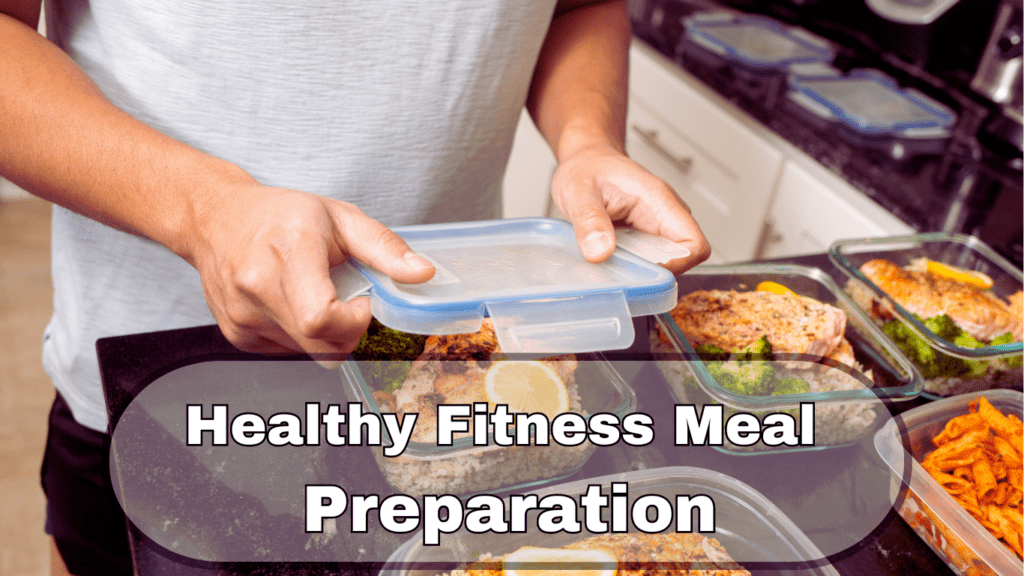Meal Prep on a Budget: How to Eat Healthy Without Breaking the Bank
In this article, we will explore effective and practical strategies for meal prep on a budget, empowering you to eat healthier without breaking the bank while saving time and reducing food waste.
Isn’t it funny how it sometimes feels like the more healthy we want to eat, the more broke we end up? It’s like the kale is asking for your whole paycheck! But here’s the thing: meal prep on a budget is totally doable, and it’s actually way more manageable than it seems. In fact, planning ahead and prepping your meals can save you both time and money—and your wallet will thank you for it.
Eating healthy often feels expensive, but it doesn’t have to be. Many of us fall into the trap of thinking that in order to eat nutritious foods, we have to splurge on fancy ingredients or pre-packaged health foods. The truth is, with a little strategy, you can easily plan meals that are both healthy and affordable. This article will show you how to master meal prep on a budget, focusing on practical tips that combine both smart spending and solid nutritional science.

You’ve probably heard the common complaints: “Healthy food is too expensive” or “I just don’t have time to cook.” These are real concerns, but the solution lies in a little bit of planning and a shift in mindset. When you approach meal prep with a focus on maximizing nutrition while minimizing costs, it becomes much easier to eat well without constantly feeling like you’re emptying your wallet. The goal of this article is simple: help you prep nutritious meals without breaking the bank.
You don’t need to be a master chef, and you certainly don’t need to spend hours in the kitchen every day. Meal prep on a budget is all about making the most of what you have and being smart with how you shop and cook. Whether you’re feeding a family or just cooking for yourself, there are practical ways to make it happen without sacrificing health or flavor.
Subscribe And Get Our Free E-Book:Unlocking The Power Of Nutrition-Supplements, Substitutes, and Superfoods!
So, what can you expect in this guide? We’ll be covering essential topics that will set you up for success, like planning ahead, shopping smart, and using affordable nutrition hacks. Planning is at the core of saving money and eating well, and it doesn’t have to be complicated. You’ll learn how to create simple, balanced meals that you can make in advance, so you’re not tempted to spend on takeout or quick fixes when hunger strikes.
Shopping smart is another key focus—there are so many ways to cut costs while still stocking up on healthy, whole foods. This includes learning to shop seasonally, taking advantage of sales, and knowing which pantry staples give you the best nutritional bang for your buck.
And finally, we’ll dive into affordable nutrition hacks—simple tricks to help you stretch your budget without sacrificing the quality of your meals. These are techniques anyone can use, whether it’s learning how to buy in bulk, freeze meals, or use versatile ingredients in multiple dishes.
By the end of this article series, you’ll have a clear understanding of how to manage meal prep on a budget, plan your meals efficiently, and shop like a pro. You’ll also walk away with specific strategies that make meal prepping easy, cost-effective, and nutritious.
Stay tuned as we break down these topics in the next sections. You’re about to become a pro at balancing nutrition and budgeting—no kale-induced wallet pain required!
How To Meal Prep For Bodybuilding As A Student Or A Broke Adult Video
Why Healthy Eating Seems Expensive (And How to Overcome It)
It’s easy to see why many people think eating healthy is expensive. Everywhere you look, there are pricey “superfoods” or expensive organic products being marketed as essential for a healthy diet. However, this is one of the most common misconceptions about nutrition. The truth is, you don’t need fancy, high-priced foods to eat well. Let’s break down why healthy eating seems expensive, and how to avoid falling into that trap—especially when you’re focused on meal prep on a budget.
The Misconception: Why Healthy Eating Seems Expensive
The health food industry often promotes the idea that we need to buy specialty products to be healthy. Words like “organic,” “superfoods,” and “artisanal” tend to be used as selling points, making it seem like these are the only options if you want to eat well. For example, foods like quinoa, chia seeds, and kale are often touted as must-haves, when in reality, more affordable alternatives offer similar nutritional value. The marketing around these products can lead people to believe that eating healthy automatically equals spending more. But meal prep on a budget doesn’t require you to invest in these trendy foods.
Instead, it’s about focusing on what really matters—getting a balance of macronutrients (protein, fats, and carbohydrates) and micronutrients (vitamins and minerals) into your meals. It’s about eating foods that are packed with nutritional value, not foods that come with a high price tag. For example, you don’t need to buy fancy protein powders to meet your protein needs—simple foods like beans, lentils, and eggs are just as effective, and much more affordable.
The Science: Nutrients Over Hype
Healthy eating is not about chasing the latest health trend or spending your money on “superfoods.” Scientifically, it’s more important to focus on getting a good balance of nutrients in your meals. You don’t need expensive ingredients to get the nutrients your body needs. For example, oats are an excellent source of fiber and can easily replace more expensive options like chia seeds. Both provide similar benefits for digestion and heart health, but oats are a budget-friendly staple that you can incorporate into multiple meals throughout the week.
A balanced diet can easily be built around whole grains, vegetables, lean proteins, and healthy fats—all of which are available at much lower prices than their trendy counterparts. And when you plan your meal prep on a budget, you’ll find that these simple ingredients can stretch a long way.
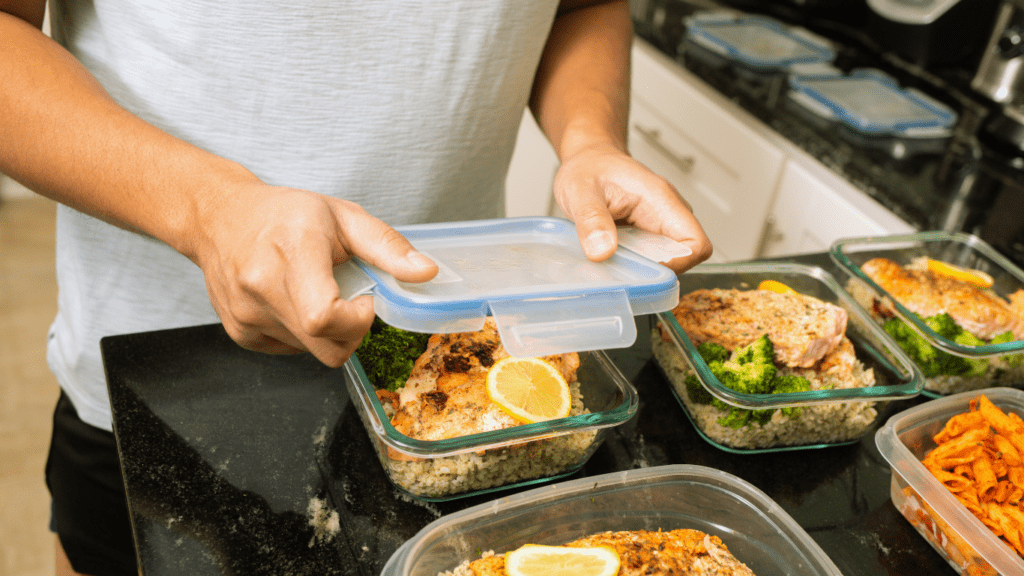
The Reality: Smart Choices, Not Expensive Ones
Eating healthy doesn’t mean buying the most expensive, Instagram-worthy ingredients. It’s about making smart choices with your grocery shopping and meal planning. For example, fresh produce can often be expensive if it’s out of season, but frozen vegetables offer the same nutritional benefits at a fraction of the cost—and they last much longer. When you’re working on meal prep on a budget, you’ll want to focus on affordable yet nutrient-dense foods that provide long-term value.
Canned beans, frozen vegetables, bulk grains like rice and oats, and simple proteins like chicken or tofu are all examples of affordable options that can help you meet your nutritional goals without overspending. Not only are they cheaper, but they’re also versatile, meaning you can use them in multiple recipes throughout the week.
You don’t need a cart full of expensive items to eat well. In fact, with a bit of planning, you can put together meals that are packed with nutrients without paying a premium. Remember, meal prep on a budget is all about working with what you have, making the most of affordable ingredients, and still meeting your nutritional needs.
By focusing on simple, nutrient-rich foods, you’ll save money and still enjoy a well-rounded, healthy diet. There’s no need to spend extra on trendy health foods when affordable staples can do the job just as well. Meal prep on a budget isn’t about sacrificing quality; it’s about making smart, informed choices with your shopping and cooking habits.
The Importance of Nutrient Density in Meal Prep on a Budget
When it comes to meal prep on a budget, one of the most crucial concepts to understand is nutrient density. This term refers to the amount of essential nutrients a food provides in relation to its calorie content. In simpler terms, it means that some foods offer a wealth of vitamins, minerals, and other beneficial compounds without packing on excess calories. By focusing on nutrient density rather than calorie density, you can eat well while keeping your costs down.
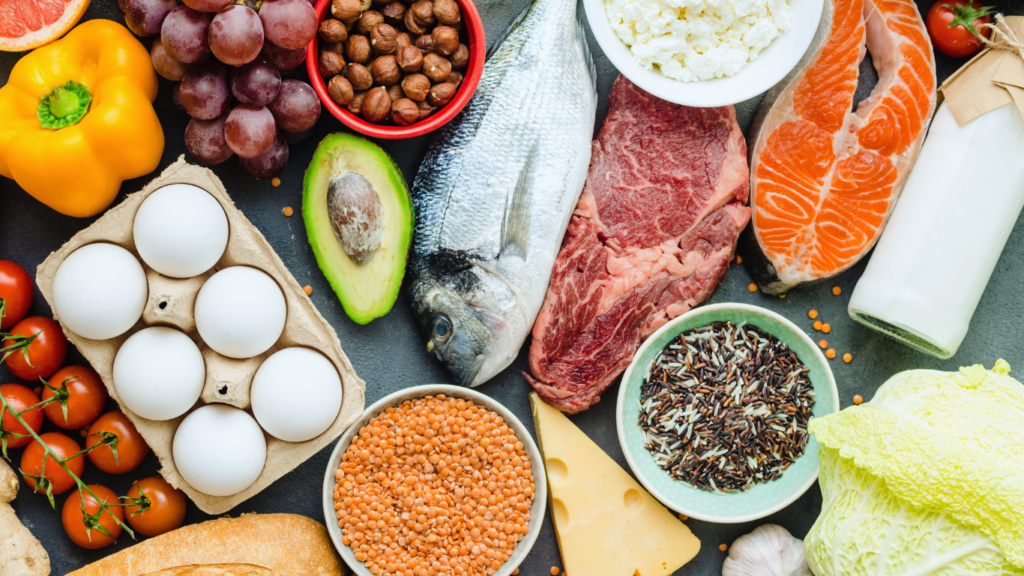
Understanding Nutrient Density
Nutrient-dense foods are those that provide high levels of nutrients—like vitamins, minerals, and protein—per serving while being lower in calories. Think of leafy greens, legumes, and whole grains as prime examples. These foods not only keep you full but also supply your body with the essential nutrients it needs to function optimally. In contrast, calorie-dense foods are often high in empty calories, meaning they provide little nutritional value for the calories they contain. Common examples include sugary snacks, sodas, and highly processed foods, which might fill you up but leave you lacking in essential nutrients.
Why Nutrient Density Matters
Focusing on nutrient density is especially important for anyone looking to maintain a healthy diet without breaking the bank. Here’s why this approach matters:
- More Nutrients for Less Money: By choosing foods that are rich in nutrients, you can ensure you’re getting the vitamins and minerals your body needs without spending a lot on expensive “superfoods.”
- Better Satiety: Foods that are nutrient-dense tend to keep you feeling full longer, helping you avoid the temptation of unhealthy snacks between meals. This can help you save both calories and money in the long run.
- Versatility: Many nutrient-dense foods are incredibly versatile, allowing you to incorporate them into various dishes without getting bored. This is particularly helpful for effective meal prep on a budget, as it allows you to create a wide range of meals with a limited number of ingredients.
Affordable and Nutrient-Dense Options
The good news is that many nutrient-dense foods are also budget-friendly. Here are some great options to consider when planning your meal prep on a budget:
- Eggs: Packed with protein and essential vitamins, eggs are one of the most versatile and affordable sources of nutrition available. They can be used in a variety of dishes, from breakfast scrambles to salads and more.
- Lentils: These legumes are rich in protein, fiber, and various micronutrients. They’re also incredibly affordable and can be easily added to soups, stews, or salads.
- Beans: Whether you prefer black beans, chickpeas, or kidney beans, these are excellent sources of protein and fiber. They can be bought canned or dried, making them a cost-effective option for any meal plan.
- Canned Fish: Options like sardines or mackerel are packed with omega-3 fatty acids and other nutrients. They’re typically less expensive than fresh fish and have a long shelf life, making them perfect for meal prep on a budget.
- Frozen Vegetables: Often just as nutritious as fresh produce, frozen vegetables can be a cost-effective choice. They’re pre-washed and chopped, making them convenient to add to stir-fries, casseroles, or side dishes.
Chart: Nutrient-Dense Foods for Budget Meal Prep
| Food | Key Nutritional Benefits | Simple Meal Ideas |
|---|---|---|
| Eggs | Rich in protein, vitamins A, D, B12, and minerals like iron and zinc | Scrambled eggs, omelets, egg salad, boiled eggs in salads, breakfast burritos |
| Lentils | High in protein, fiber, iron, and folate | Lentil soup, lentil curry, lentil salad, lentil tacos |
| Beans (Canned/Dried) | High in protein, fiber, iron, potassium, and antioxidants | Bean chili, bean salads, bean stir-fries, bean wraps |
| Frozen Vegetables | Packed with vitamins, fiber, and antioxidants | Stir-fries, veggie soups, casseroles, side dishes |
| Canned Fish (e.g. Sardines, Mackerel) | High in omega-3 fatty acids, protein, and calcium | Fish salad, fish stew, fish tacos, fish sandwiches, pasta with canned fish |
| Oats | Rich in fiber, manganese, and antioxidants | Oatmeal, overnight oats, oat pancakes, smoothies |
| Whole Grains (Rice, Quinoa, Barley) | Excellent source of complex carbs, fiber, and B vitamins | Grain bowls, stir-fries, grain-based salads, soups |
| Sweet Potatoes | High in fiber, vitamins A and C, and potassium | Roasted sweet potatoes, mashed sweet potatoes, sweet |
Explanation of the Chart: Nutrient-Dense Foods for Budget Meal Prep
- Eggs
- Nutritional Benefits: Eggs are a powerhouse of protein, vitamins (A, D, B12), and minerals (iron and zinc), making them an essential ingredient for building muscle and supporting overall health.
- Meal Ideas: Versatile and quick to cook, eggs can be used in a variety of dishes like scrambles, salads, and omelets. They can also be boiled and added to meals like grain bowls or sandwiches.
- Lentils
- Nutritional Benefits: Lentils are a fantastic source of plant-based protein, fiber, and essential nutrients like iron and folate, which are key for energy and immune function.
- Meal Ideas: Easy to prepare and very filling, lentils can be turned into hearty soups, stews, curries, or even used in salads. They can also serve as a protein-packed filling for wraps or tacos.
- Beans (Canned/Dried)
- Nutritional Benefits: Beans are high in protein, fiber, and essential minerals like potassium and iron. They help regulate blood sugar levels and support digestive health.
- Meal Ideas: Beans can be used in a variety of ways, including in soups, stews, salads, or stir-fries. They’re perfect for creating affordable and nutritious vegetarian meals like chili or bean tacos.
- Frozen Vegetables
- Nutritional Benefits: Frozen vegetables retain most of their nutrients, including fiber, vitamins, and antioxidants, and are often just as nutritious as fresh options. They also have a longer shelf life, reducing waste.
- Meal Ideas: Frozen veggies are easy to incorporate into stir-fries, casseroles, soups, and stews, offering a quick way to boost the nutrient content of any meal.
- Canned Fish (e.g., Sardines, Mackerel)
- Nutritional Benefits: Canned fish are excellent sources of omega-3 fatty acids, protein, and calcium, which support heart health, brain function, and bone health.
- Meal Ideas: Canned fish is a great, cost-effective option for salads, pasta dishes, sandwiches, or fish tacos. It’s also perfect for making a quick and nutritious meal when time is short.
- Oats
- Nutritional Benefits: Oats are rich in fiber, antioxidants, and important minerals like manganese, helping with digestion, heart health, and long-lasting energy.
- Meal Ideas: Oats can be used for breakfast (oatmeal or overnight oats) or baked into pancakes, muffins, and energy bars. You can also add oats to smoothies for extra fiber.
- Whole Grains (Rice, Quinoa, Barley)
- Nutritional Benefits: Whole grains are packed with complex carbohydrates, fiber, and B vitamins, which provide sustained energy and help regulate blood sugar.
- Meal Ideas: Whole grains can form the base of many meals, such as grain bowls, stir-fries, or grain-based salads. They’re perfect for creating a filling, nutrient-dense meal that’s both satisfying and affordable.
- Sweet Potatoes
- Nutritional Benefits: Sweet potatoes are rich in fiber, vitamins A and C, and potassium, making them great for immune health, digestion, and energy.
- Meal Ideas: Sweet potatoes are versatile and can be roasted, mashed, or turned into fries. They’re an excellent side dish or can be added to soups, stews, or salads for extra flavor and nutrition.
- Leafy Greens (Spinach, Kale, etc.)
- Nutritional Benefits: Leafy greens are high in vitamins A, C, and K, as well as minerals like iron and calcium. They’re known for their antioxidant properties and are great for maintaining bone health and improving digestion.
- Meal Ideas: Use leafy greens in salads, soups, smoothies, or as a side dish. They can also be added to egg scrambles or grain bowls for a nutrient boost.
Incorporating Nutrient-Dense Foods into Meal Prep
When planning your meal prep on a budget, it’s important to focus on incorporating these nutrient-dense foods into your meals. Here are a few tips to help you make the most of them:
- Plan Your Meals Around Nutrient-Dense Ingredients: Start by choosing a few key nutrient-dense foods, then build your meals around them. For instance, create a lentil soup, an egg salad, or a bean chili.
- Batch Cooking: Prepare larger quantities of nutrient-dense meals, then portion them out for the week. This ensures you always have healthy options available, reducing the likelihood of turning to less nutritious choices.
- Experiment with Recipes: Don’t hesitate to try new recipes that utilize these affordable ingredients. You might discover a new favorite that you can add to your regular rotation.
- Mix and Match: Combine various nutrient-dense foods to create balanced meals. For example, pair eggs with spinach and tomatoes for breakfast or mix beans with rice and frozen vegetables for a hearty lunch.
By prioritizing nutrient density over calorie density in your meal prep on a budget, you can enjoy delicious and satisfying meals without overspending. Not only will this approach support your health, but it will also make meal planning and preparation much easier and more enjoyable. In the next section, we’ll explore practical tips for smart grocery shopping to help you save even more money while eating well.
Step-by-Step Meal Prepping on a Budget
When it comes to meal prep on a budget, planning is the key to success. It’s not just about what you cook; it’s also about how you approach the entire process. By organizing your meals and shopping strategically, you can eat healthy without breaking the bank. Let’s dive into the steps you can take to master meal prep on a budget, from planning your weekly menu to making smart shopping choices.
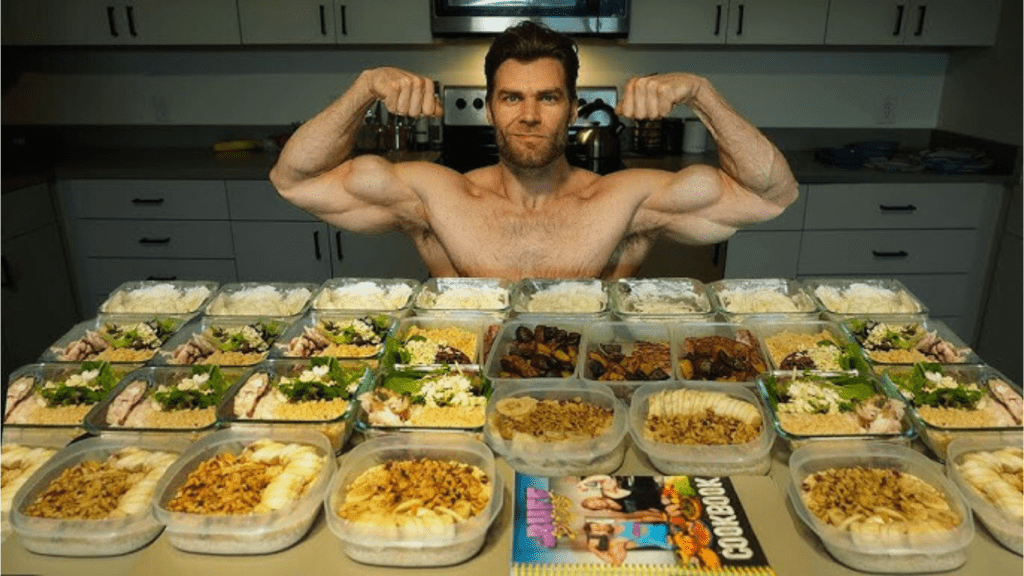
Step 1: Planning is Key
Weekly Menu
Creating a meal plan is the first step in successful meal prepping. When you plan your meals around affordable staples, you ensure you’re making cost-effective choices. Consider using grains, beans, and seasonal vegetables as the backbone of your menu.
- Grains: Brown rice, quinoa, and whole wheat pasta are excellent choices that can serve as the base for many meals.
- Beans: Incorporating beans not only boosts the protein content of your meals but also adds fiber and nutrients. They’re versatile and can be used in salads, soups, and wraps.
- Seasonal Vegetables: Opt for vegetables that are in season. They are usually cheaper and more flavorful. Check local farmer’s markets or grocery store flyers to find out what’s in season in your area.
Having a set weekly menu helps eliminate the guesswork when it comes time to cook. This also reduces the chances of resorting to takeout or more expensive convenience foods.
Batch Cooking
One of the most effective strategies for meal prep on a budget is batch cooking. This means preparing larger quantities of food at once, which can save you both time and money in the long run. Consider making:
- Soups: A big pot of vegetable or bean soup can provide several meals. It freezes well and can be easily reheated.
- Stews and Curries: These dishes are flavorful and hearty, perfect for meal prepping. You can use a variety of proteins and vegetables, making them adaptable to whatever ingredients you have on hand.
- Casseroles: These are excellent for making in large quantities and can be portioned out for quick meals throughout the week.
By batch cooking, you take advantage of the lower cost of buying ingredients in bulk, and you’ll always have a healthy meal ready to go, reducing the temptation to order out.
Repurposing Ingredients
Another smart strategy in meal prep on a budget is learning how to repurpose ingredients. By using the same ingredient in multiple meals, you can maximize your investment and minimize waste. For example, if you roast a whole chicken, you can use it in various ways throughout the week:
- Salads: Shred some chicken and toss it with greens, veggies, and your favorite dressing.
- Wraps: Use tortillas or lettuce leaves to make chicken wraps with fresh veggies and sauces.
- Stir-Fries: Stir-fry leftover chicken with a mix of seasonal vegetables for a quick dinner.
Not only does this approach save money, but it also adds variety to your meals, ensuring you won’t get bored eating the same thing.
Step 2: Budget-Friendly Shopping Tips
Grocery List Strategy
A solid grocery list strategy can make all the difference when it comes to sticking to your budget. Before heading to the store, take a moment to list out the ingredients you need based on your meal plan. This helps you avoid impulse buying and ensures you only purchase items that fit into your budget.
- Stick to the List: Resist the temptation to buy items not on your list, as they can add up quickly and lead to overspending.
- Plan for Snacks: If you know you need snacks for the week, include them on your list as well, focusing on budget-friendly options like fruits, nuts, or yogurt.
Shop Seasonal and Local
Buying seasonal and local produce is one of the best ways to save money while ensuring you’re eating fresh, nutritious food. Seasonal produce is often cheaper and typically tastes better because it’s harvested at its peak ripeness.
- How to Check What’s in Season: You can check local grocery stores, farmer’s markets, or online resources that list seasonal produce in your area. Planning your meals around what’s in season can lead to significant savings and better-tasting dishes.
Bulk Buying
Buying in bulk is another effective strategy for reducing your grocery bill. Non-perishable items like rice, beans, and oats are often much cheaper when purchased in larger quantities.
- Storage Tips: Make sure you have appropriate storage containers to keep bulk items fresh. Consider investing in airtight containers for grains and legumes.
Frozen is Your Friend
Don’t overlook the power of frozen fruits and vegetables. They are often cheaper than fresh produce, especially when items are out of season, and they retain their nutritional value.
- Convenience: Frozen veggies can be a great time-saver, as they require less prep time than fresh. Just toss them into your dishes straight from the freezer.
Step 3: Smart Protein Choices
When it comes to protein sources, you don’t have to spend a fortune to get the nutrients you need. Here are some budget-friendly protein options:
- Canned Tuna: A great source of lean protein that’s also affordable. Use it in salads, pasta dishes, or sandwiches.
- Eggs: Eggs are one of the most economical protein sources available. They can be boiled, scrambled, or made into omelets and are suitable for any meal of the day.
- Legumes: Beans and lentils are not only cost-effective but also rich in protein and fiber. Use them in soups, salads, or as side dishes.
- Tofu: A fantastic plant-based protein that’s often cheaper than meat. Tofu can be marinated, grilled, or added to stir-fries for a nutritious boost.
- Whole Chickens: Buying a whole chicken can save you money compared to buying individual cuts. You can roast it and use the leftovers in various meals throughout the week.
Mastering meal prep on a budget requires some planning and smart choices, but the payoff is well worth the effort. By focusing on nutrient-dense foods, batch cooking, repurposing ingredients, and following budget-friendly shopping tips, you can create healthy, satisfying meals without overspending. Remember, it’s all about being strategic with your time and resources. With these tips in hand, you’re well on your way to achieving a successful meal prep routine that fits your budget and supports your health. In the next section, we’ll explore delicious, budget-friendly recipes that will make your meal prep even easier.
Maximizing Nutrients on a Budget
Maximizing nutrients while keeping costs low is essential for anyone focused on meal prep on a budget. By understanding the different food groups and how they contribute to your health, you can create meals that are both nutritious and affordable. Let’s explore how to incorporate protein, carbohydrates, healthy fats, and fiber into your meal prep routine, ensuring you get the most bang for your buck.
Protein-Rich Foods
Protein on a Budget
Protein is a critical macronutrient that plays a vital role in muscle building, recovery, and satiety. When you’re preparing meals on a budget, it’s essential to find cost-effective sources of protein that won’t strain your wallet. Here are some affordable options:
- Eggs: Versatile and packed with protein, eggs can be used in a variety of dishes. They are not only budget-friendly but also provide essential amino acids necessary for muscle repair.
- Beans: A fantastic source of plant-based protein, beans are inexpensive and can be incorporated into many recipes. They’re rich in fiber, making them a great choice for satiety.
- Canned Fish: Options like tuna or sardines are excellent sources of protein that are often more affordable than fresh fish. They are convenient for salads, sandwiches, or pasta dishes.
- Poultry: Chicken, particularly when purchased whole, can be a cost-effective source of lean protein. You can roast it and use leftovers in multiple meals throughout the week.
Meal Example
To illustrate how you can create high-protein meals for less than $5 a day, consider making egg muffins. Simply whisk eggs with your choice of vegetables and a bit of cheese, pour the mixture into muffin tins, and bake. These muffins can be made in bulk and stored for quick breakfasts throughout the week.
Another option is a chickpea curry. Sauté onions, garlic, and spices, then add canned chickpeas and diced tomatoes. Serve this with brown rice or quinoa for a filling, protein-rich meal that costs less than $5.
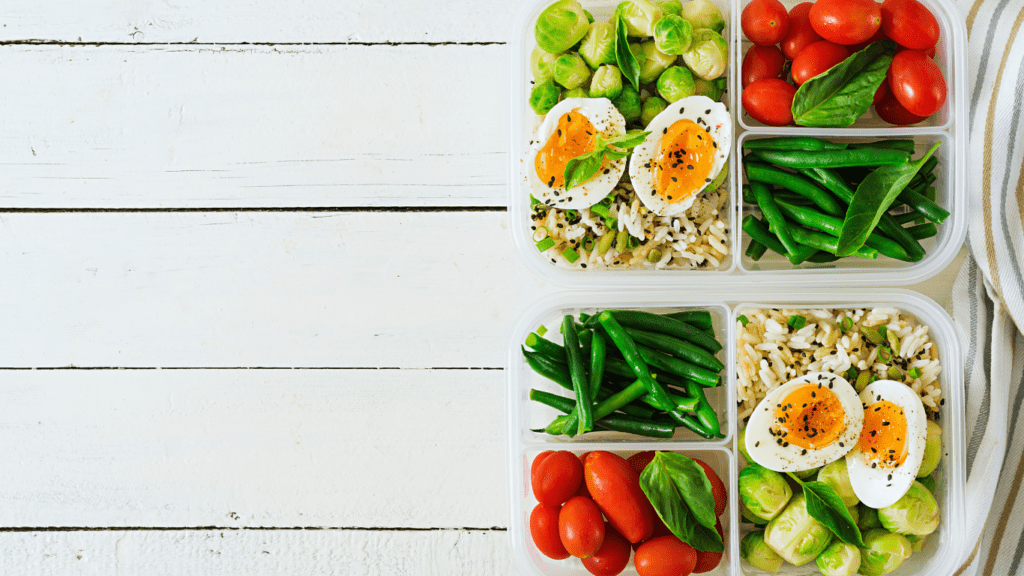
Carbohydrates
Affordable and Nutritious Carbs
Carbohydrates are a vital energy source, and choosing the right ones can make your meals both nutritious and filling. Focus on whole grains that are inexpensive and high in fiber. Here are some excellent options:
- Oats: A great breakfast choice, oats are inexpensive and provide sustained energy. They are also versatile, allowing you to prepare them in various ways.
- Brown Rice: A staple in many diets, brown rice is affordable and serves as an excellent base for many dishes.
- Quinoa: While it can be slightly more expensive than rice, quinoa is still a valuable addition due to its complete protein content and high fiber levels.
Meal Example
For an easy and affordable breakfast, try overnight oats. Combine oats with milk (or a milk alternative), yogurt, and your favorite fruits. Prepare this the night before, and you’ll have a nutritious meal ready to go in the morning.
Another cost-effective option is a rice and bean bowl. Cook brown rice and top it with black beans, salsa, and avocado (or a drizzle of olive oil if you want to keep costs lower). This meal is not only filling but also provides a balanced source of protein, fiber, and healthy fats.
Healthy Fats
Cost-Effective Fat Sources
Healthy fats are crucial for overall health, and you don’t need to rely on expensive avocados to get them. Here are some budget-friendly sources of healthy fats:
- Nuts: Almonds, walnuts, and peanuts provide healthy fats and can be added to various dishes for extra flavor and texture. Just be mindful of portion sizes, as nuts can be calorie-dense.
- Seeds: Chia seeds, flaxseeds, and sunflower seeds are great additions to smoothies, salads, or baked goods.
- Peanut Butter: This is an affordable and delicious way to incorporate healthy fats into your diet. It can be spread on toast, added to smoothies, or used in energy balls.
- Olive Oil: A staple in many kitchens, olive oil is a healthy fat that can be drizzled over vegetables, used in salad dressings, or incorporated into stir-fries.
Meal Example
To create a nutritious snack, make peanut butter energy balls. Combine oats, peanut butter, honey, and any mix-ins like chocolate chips or dried fruits. These energy balls are not only affordable but also provide a satisfying and nutrient-dense treat.
You can also prepare a quick stir-fry using seasonal vegetables and a drizzle of olive oil. Add some tofu or chicken for protein, and serve it over brown rice for a balanced meal.
Fiber and Micronutrients
Cheap Sources of Fiber
Fiber is essential for digestive health and can help keep you feeling full longer. Fortunately, there are plenty of cheap sources of fiber that can easily fit into your meal prep on a budget:
- Beans: In addition to being a protein source, beans are also high in fiber, making them a fantastic addition to any meal.
- Lentils: Similar to beans, lentils are inexpensive and rich in fiber and protein. They cook quickly and can be added to soups, stews, or salads.
- Carrots: Affordable and versatile, carrots can be eaten raw, roasted, or added to various dishes for extra nutrients.
- Frozen Spinach: This is a cost-effective way to incorporate greens into your meals. Frozen vegetables often retain most of their nutrients and can be easily added to smoothies, omelets, or casseroles.
The Frozen Advantage
Frozen fruits and vegetables are often cheaper than fresh and have a longer shelf life. They retain almost all their nutrients because they are frozen shortly after harvesting, making them a smart choice for your budget and nutrition.
Micronutrient Hack
To boost nutrient absorption, consider adding a squeeze of lemon juice to your greens. The vitamin C in lemons enhances iron absorption, making it an inexpensive way to increase the nutritional value of your meals.
Chart: Cost-Effective Nutrient Pairings for Budget Meal Prep
| Nutrient Group | Affordable Sources | Smart Pairing Ideas | Nutritional Benefit |
|---|---|---|---|
| Protein | Eggs, Beans, Lentils, Canned Tuna, Tofu, Whole Chicken | – Egg muffins with beans – Tofu stir-fry with seasonal veggies – Chicken wraps | Builds muscle, aids in recovery, supports satiety |
| Carbohydrates | Brown Rice, Oats, Quinoa, Sweet Potatoes, Whole Wheat Pasta | – Oats with fruit and nuts for breakfast – Brown rice bowl with beans and avocado – Sweet potatoes roasted with beans | Provides long-lasting energy, stabilizes blood sugar |
| Healthy Fats | Nuts, Seeds (Chia, Flax, Sunflower), Peanut Butter, Olive Oil | – Peanut butter energy balls – Chia pudding with yogurt – Stir-fry with olive oil and nuts | Supports brain health, hormone balance, and heart health |
| Fiber & Micronutrients | Beans, Lentils, Carrots, Frozen Spinach, Seasonal Veggies | – Lentil soup with carrots and spinach – Bean salad with seasonal veggies | Improves digestion, boosts immunity, and controls hunger |
| Budget Staples | Frozen Vegetables, Canned Fish (Tuna, Sardines), Bulk Grains | – Canned tuna salad with mixed greens – Frozen veggie stir-fry with quinoa | Maximizes nutrition at low cost, reduces food waste |
Explanation of the Chart
- Protein: Budget-friendly protein options like eggs, beans, and tofu can be paired with grains like quinoa or oats to create a balanced meal that’s both satisfying and affordable.
- Example Pairing: Tofu stir-fried with seasonal veggies provides plant-based protein and fiber in one dish.
- Carbohydrates: Whole grains like brown rice and oats are filling, nutrient-dense, and low-cost. Pairing them with beans or vegetables adds fiber and vitamins.
- Example Pairing: Brown rice bowls with beans and avocado offer a balanced meal rich in fiber and healthy fats.
- Healthy Fats: Items like nuts, seeds, and olive oil provide essential fats that support overall health. Pairing these with fruits or whole grains increases meal satisfaction and nutritional value.
- Example Pairing: Peanut butter energy balls made with oats and honey offer a cost-effective, nutrient-dense snack rich in healthy fats.
- Fiber & Micronutrients: Vegetables like carrots, spinach, and seasonal produce are high in fiber and micronutrients. These can be paired with legumes like beans and lentils for even more nutritional benefits.
- Example Pairing: Lentil soup with carrots and spinach is a hearty, fiber-rich meal that promotes digestive health and provides essential vitamins.
- Budget Staples: Frozen vegetables and bulk grains are often the most cost-effective options for meal prep. Canned fish is another smart staple for adding protein without the high cost of fresh fish.
- Example Pairing: A canned tuna salad with mixed greens is an easy, protein-packed meal that’s both affordable and nutritious.
Maximizing nutrients on a budget doesn’t have to be a daunting task. By focusing on meal prep on a budget, you can enjoy a variety of foods rich in protein, carbohydrates, healthy fats, fiber, and micronutrients without overspending. Incorporate these affordable options into your meal planning, and you’ll be well on your way to maintaining a healthy diet that supports your lifestyle and budget. In the next section, we’ll explore some delicious and easy-to-make recipes that will bring all these concepts together.
Practical Examples of Meal Prep on a Budget
When it comes to meal prep on a budget, finding practical examples that fit your lifestyle can make all the difference. In this section, we will explore budget-friendly meal ideas that are not only nutritious but also easy to prepare. Let’s dive into some affordable breakfast, lunch, and dinner options that will keep your wallet happy while satisfying your taste buds.
Budget Breakfasts
Oatmeal
Oatmeal is one of the most versatile and inexpensive breakfast options available. You can prepare a large batch for the week and customize it each day. Start with plain oats and add your favorite toppings. For a flavor boost, consider mixing in frozen berries or a spoonful of peanut butter. Frozen berries are often cheaper than fresh, retain their nutrients, and add natural sweetness and antioxidants to your meal. This breakfast option is not only filling but also provides a great source of fiber to start your day right.
Egg Muffins
Another great option for meal prep on a budget is egg muffins. These are affordable, easy to batch-cook, and packed with protein and vegetables. Simply whisk together eggs and your choice of chopped vegetables, like spinach, bell peppers, or onions, and pour the mixture into a muffin tin. Bake until set, and you’ll have a week’s worth of nutritious breakfast ready to go. Egg muffins are perfect for busy mornings and can easily be reheated in the microwave.
Cheap and Nutritious Lunches
Rice and Bean Bowls
For lunch, consider making rice and bean bowls. This meal is high in protein, fiber, and carbohydrates, making it a complete and satisfying option. Start with a base of brown rice or quinoa and top it with canned black beans or kidney beans. Add frozen vegetables and your choice of spices to create a dish that’s as flavorful as it is nutritious. You can even mix in some salsa or avocado for an extra kick. Preparing these bowls in advance will ensure you have a quick and healthy lunch option throughout the week.
Lentil Soup
Lentil soup is another fantastic budget-friendly option for lunch. Packed with fiber, iron, and protein, lentils are incredibly nutritious and inexpensive. To make a large batch, sauté onions, carrots, and garlic in a pot, then add lentils, vegetable broth, and your choice of seasonings. Simmer until the lentils are tender, and you’ll have a hearty soup that you can freeze in individual portions. This way, you’ll always have a nutritious meal on hand when you need it most.
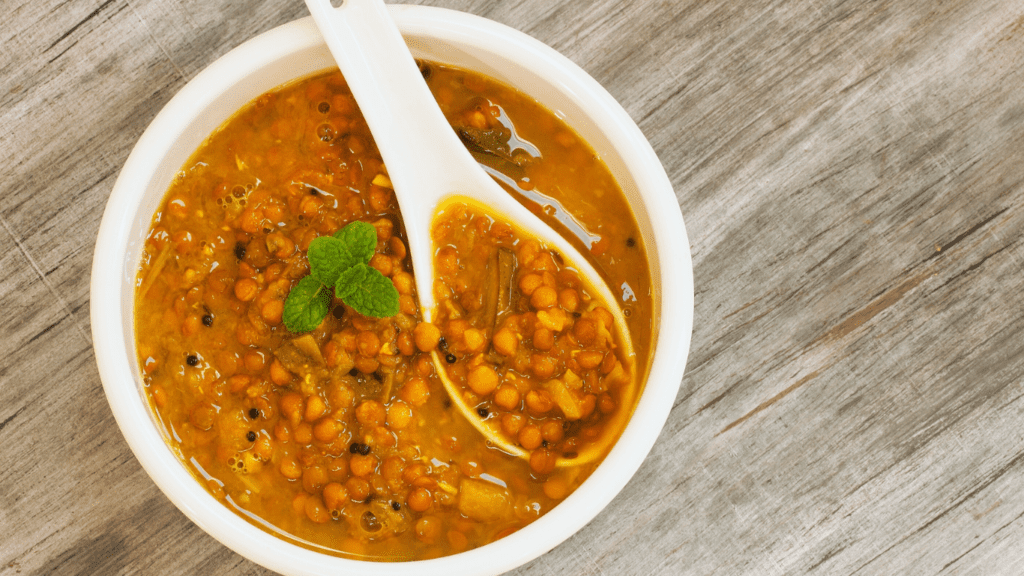
Dinner on a Dime
Stir-Fries
When it comes to dinner, stir-fries are an excellent choice for meal prep on a budget. Using frozen vegetables is a great way to save money and reduce waste, as they are often cheaper and just as nutritious as fresh produce. Pair the frozen veggies with an affordable protein source like tofu or chicken thighs. Simply toss everything in a pan with a little soy sauce and your choice of seasonings for a quick, delicious meal. Serve it over brown rice or quinoa for a complete dish that won’t break the bank.
One-Pot Pasta
Another budget-friendly dinner option is one-pot pasta. This dish is easy to prepare and requires minimal cleanup. Start with whole wheat pasta and add canned tomatoes, frozen spinach, and minced garlic to a pot. As the pasta cooks, it absorbs the flavors of the ingredients, creating a flavorful dish with no extra effort. This meal is not only cheap to make but also provides a good balance of carbohydrates, fiber, and vitamins.
Implementing these practical examples of budget-friendly meal prep can transform your eating habits without straining your finances. From versatile breakfasts like oatmeal and egg muffins to nutritious lunches such as rice and bean bowls and lentil soup, and finally to satisfying dinners like stir-fries and one-pot pasta, there are plenty of options available. Embracing the concept of meal prep on a budget allows you to eat healthily while saving time and money, making it easier to stick to your wellness goals. By incorporating these meals into your routine, you can enjoy delicious food every day without overspending.
Meal Prep Equipment You Need (on a Budget)
When it comes to meal prep on a budget, having the right equipment can make all the difference, but it doesn’t mean you need to spend a fortune. In this section, we’ll discuss the essential tools you need to get started, how to utilize what you already have, and which items can be considered long-term investments for your meal prep journey.
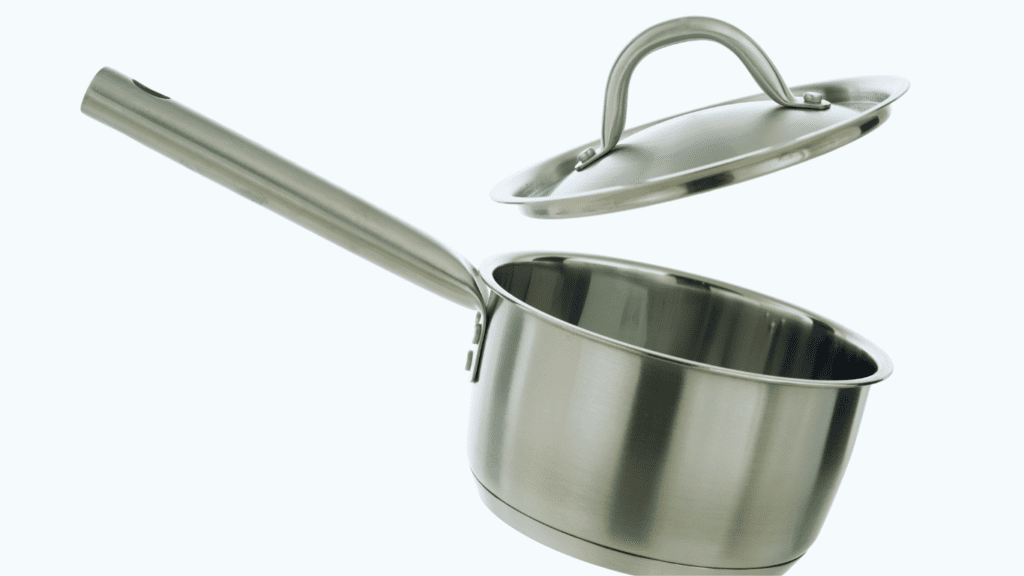
Meal Prep on a Budget: Basic Essentials
You might be surprised to learn that you don’t need fancy gadgets to effectively meal prep. Basic essentials will often suffice. Here are the key items that should be in every budget-conscious kitchen:
- A Good Knife: A sharp, reliable knife is crucial for chopping vegetables, meats, and more. Investing in a decent knife will make your prep work faster and safer.
- Meal Prep Containers: These are essential for storing your meals and keeping them fresh. Look for containers that are BPA-free, microwave-safe, and ideally glass. Glass containers are not only more durable but also allow you to see your meals at a glance, making it easier to grab what you need.
- A Sturdy Pan: A heavy-bottomed skillet or saucepan is necessary for a variety of cooking methods. It’s versatile and can be used for stir-frying, sautéing, and boiling. If you already have one, there’s no need to buy another.
- Slow Cooker (Optional): While not strictly necessary, a slow cooker can be a great addition to your meal prep arsenal. It allows you to set it and forget it, making it easier to prepare large batches of meals without constant supervision.
Meal Prep on a Budget: Use What You Have
One of the best things about meal prep on a budget is that you can often get started without any additional purchases. Look around your kitchen for tools you may already own. Here are some common kitchen items that can aid in meal prep:
- Mixing Bowls: Any mixing bowls can be used for preparing and combining ingredients. They are great for marinating proteins or tossing salads.
- Storage Bags: Resealable plastic bags can be a budget-friendly way to store ingredients or prepped meals. Just make sure they are reusable to minimize waste.
- Measuring Cups and Spoons: These are handy for accurately measuring out ingredients, especially when following recipes. If you don’t have them, use any cup or spoon you have on hand to estimate portions.
- Baking Sheets: These are perfect for roasting vegetables or baking proteins. If you have them, utilize them to cook multiple items at once in the oven.
By creatively using what you already possess, you can easily start meal prepping without feeling the need to splurge on expensive kitchen tools.
Long-Term Investments
While you can certainly get by with the basics, certain long-term investments can enhance your meal prep experience and save you money over time. These tools may require a bit of upfront investment but can make a significant difference in your cooking and storage efficiency.
- Glass Meal Prep Containers: While initially more expensive than plastic, glass containers are durable, microwave-safe, and often dishwasher-friendly. They last longer and are better for reheating food without leaching chemicals into your meals.
- Crockpot or Instant Pot: These appliances are game-changers for meal prep on a budget. They can cook large batches of soups, stews, and grains without requiring you to constantly monitor them. The ability to prepare meals in advance saves time and effort during busy weeks.
- Food Processor: If you find yourself prepping a lot of vegetables or making dips and sauces, a food processor can save you time. Look for a budget-friendly model that meets your needs without unnecessary extras.
Effective meal prep on a budget relies more on strategy than on expensive equipment. By focusing on basic essentials, making the most of what you already own, and considering a few key investments, you can streamline your meal prep process without overspending. This will not only enhance your cooking experience but also make it easier to stick to your healthy eating goals without breaking the bank. With the right tools and mindset, meal prepping can be both enjoyable and cost-effective!
Hacks to Make Meal Prepping Even Cheaper
When it comes to meal prep on a budget, getting creative can help you save even more money while enjoying delicious, nutritious meals. There are numerous hacks that can make your meal prepping experience cheaper and more efficient. Let’s explore some practical tips that can help you maximize your savings while minimizing waste.

DIY Spice Blends
One effective way to cut costs is by creating your own spice blends. Pre-made spice mixes can be convenient, but they are often overpriced. Instead, consider buying bulk spices and mixing your own at home. This not only saves you money but also allows you to customize the flavors to your liking. For example, you can easily create a taco seasoning mix with cumin, chili powder, garlic powder, and oregano. Store your blends in labeled jars or containers, and you’ll have a ready supply of flavorful additions to your meals. This simple hack can enhance your dishes while keeping your grocery budget in check.
Grow Your Own Herbs
Another fantastic way to save money while meal prepping is to grow your own herbs. A small windowsill herb garden can cut down on grocery costs significantly. Herbs like basil, cilantro, and mint are easy to grow and require very little space. Not only do fresh herbs add incredible flavor to your meals, but having them readily available also encourages you to cook more at home, which can save you from spending money on takeout. Simply plant a few pots in a sunny spot in your kitchen, and you’ll have fresh herbs on hand whenever you need them.
Using Scraps and Leftovers
A vital component of meal prep on a budget is utilizing every part of the ingredients you buy. Using scraps and leftovers can significantly reduce your grocery expenses. For example, you can make a flavorful broth from vegetable scraps, such as onion peels, carrot tops, and celery leaves. Just collect these scraps in a freezer bag, and when you have enough, simmer them with water to create a delicious vegetable broth.
Similarly, if you have leftover chicken bones from a roast, you can make bone broth. This nutrient-rich broth can be used as a base for soups, stews, or even cooked grains. By using scraps, you’re not only reducing waste but also making the most out of what you already have in your kitchen.
Avoid Food Waste
Another important aspect of effective meal prep on a budget is to avoid food waste. Planning your meals around the ingredients you have can help you use everything you buy. For instance, if you know that some produce is nearing its expiration date, plan your meals to incorporate those items first. This way, you’ll enjoy your fresh ingredients at their peak while minimizing spoilage.
Freezing leftovers is another excellent strategy. If you find yourself with more food than you can eat in a few days, portion it out and freeze it for later. This ensures you always have homemade meals on hand, reducing the temptation to order takeout when you’re pressed for time.
Additionally, consider using your leftover ingredients creatively. If you have extra vegetables, throw them into a stir-fry or a frittata. If you have rice left over, mix it into a salad or use it as a base for a grain bowl. The more you can use what you already have, the less you will spend on groceries over time.
By implementing these hacks, meal prep on a budget becomes not only easier but also more rewarding. From making your own spice blends to growing herbs at home, using scraps, and avoiding food waste, there are countless ways to save money while still enjoying nutritious meals. Each of these strategies promotes a mindful approach to cooking and eating, allowing you to take control of your food costs without sacrificing flavor or quality. With a little creativity and planning, you can make meal prepping an enjoyable and cost-effective part of your routine.
Time-Saving Strategies for Meal Prep on a Budget
When it comes to meal prep on a budget, incorporating time-saving strategies can make all the difference. Meal prepping doesn’t just save you money; it also saves you valuable time during the week. By using a few smart techniques, you can streamline your cooking process and ensure that you always have healthy meals ready to go. Let’s delve into some effective time-saving strategies that will make your meal prep on a budget both efficient and enjoyable.
Meal Prep on a Budget: Plan & Cook in Bulk
One of the most effective ways to save time while meal prepping on a budget is to plan and cook in bulk. Spending just one hour on meal prep can save you hours during the week. Start by dedicating a specific day and time each week for your meal prep. Use this time to plan out your meals for the week and then cook large batches of food that can be easily divided into portions.
For example, you can prepare a big pot of brown rice or quinoa that will serve as a base for multiple meals. Likewise, cooking a large batch of beans or lentils can provide a protein-rich addition to salads, wraps, and grain bowls. By cooking in bulk, you’ll find that you not only save time but also reduce the temptation to opt for unhealthy, last-minute food choices during the week.
Mix & Match
Another great strategy to optimize your meal prep on a budget is to mix and match basic ingredients. Prep versatile ingredients that can be used in different meals throughout the week. This approach allows you to create a variety of dishes without getting bored or overwhelmed.
For instance, you can prepare a batch of roasted vegetables and a couple of protein options, like grilled chicken or tofu. With these components ready to go, you can create a multitude of meals. Toss the roasted veggies and protein into a salad, mix them into a wrap, or serve them over grains. This not only makes your meal prep more efficient but also ensures you have diverse meals to look forward to throughout the week.
Keep It Simple
Incorporating simplicity into your meal prep on a budget can dramatically reduce your time spent in the kitchen. Focus on easy-to-prep staples rather than complicated recipes that require many ingredients and lengthy preparation. Simple meals often rely on a few key ingredients that can be combined in various ways.
Consider meals like stir-fries that require minimal chopping and cooking time. You can quickly sauté a protein of your choice with whatever vegetables you have on hand and serve it over rice or quinoa. Another example is one-pot meals, which allow you to cook everything in one dish, saving both time and cleanup effort.
Using simple recipes also helps keep your grocery list shorter, which aligns perfectly with your goal of meal prep on a budget. You won’t need to spend time hunting for hard-to-find ingredients or following complex cooking instructions. Instead, you can enjoy the satisfaction of making healthy meals with minimal effort.
By implementing these time-saving strategies, meal prep on a budget becomes not only manageable but also a stress-free experience. Planning and cooking in bulk allows you to streamline your process, while mixing and matching ingredients keeps your meals exciting and diverse. Simplifying your meals can also save you precious time and reduce unnecessary expenses. With these tips in hand, you can transform your meal prep routine, making it easier to stick to your budget and maintain a healthy lifestyle throughout the week. So roll up your sleeves, get organized, and enjoy the benefits of efficient and affordable meal prep!
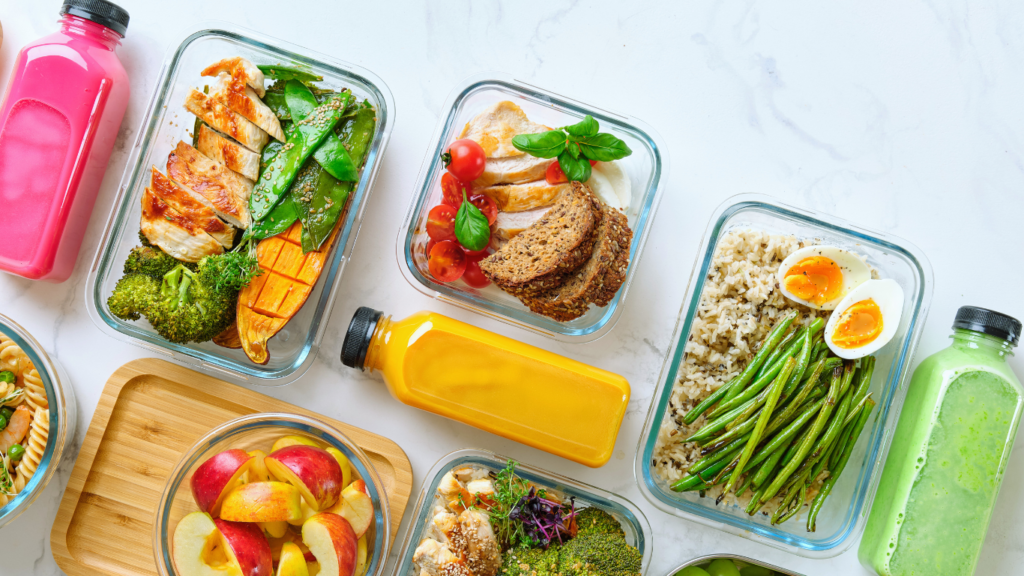
Final Thoughts on Meal Prep on a Budget: Making Healthy Eating Affordable
As we conclude our discussion on meal prep on a budget, it’s crucial to reinforce our key message: healthy eating doesn’t have to be expensive; it just requires a bit of planning and smart shopping. Many people believe that eating healthily means spending more, but this article has shown that with the right strategies, you can maintain a nutritious diet without straining your finances. Let’s summarize the key points we’ve explored and discuss why these ideas are essential for successful meal prep on a budget.
Meal Prep on a Budget: Key Points Recap
- Nutrient Density Over Calorie Density: We discussed the importance of choosing nutrient-dense foods, which provide essential vitamins, minerals, and protein without excessive calories. Leafy greens, legumes, and whole grains are affordable options that deliver excellent nutritional value without the high price tag of trendy superfoods. This approach ensures you get the most out of every dollar spent on food.
- Effective Meal Planning: The foundation of successful meal prep on a budget lies in planning. Creating a weekly menu focused on affordable staples like grains, beans, and seasonal vegetables allows you to buy only what you need, reducing waste and unnecessary expenses. Batch cooking meals like soups, stews, and casseroles saves time and ensures you always have healthy options on hand.
- Budget-Friendly Shopping Tips: We highlighted practical shopping strategies to keep costs down. By making a grocery list based on your meal plan, you can avoid impulse purchases that can quickly add up. Shopping for seasonal produce is often cheaper and more nutritious. Additionally, buying in bulk and opting for frozen fruits and vegetables can lead to significant savings while maintaining the quality of your meals.
- Maximizing Nutrients for Less: In our discussion, we explored various budget-friendly sources of protein, carbohydrates, and healthy fats. Affordable foods such as eggs, canned beans, and frozen vegetables allow you to create nutritious meals without breaking the bank. Simple, high-protein recipes, such as chickpea curry or oatmeal with peanut butter, exemplify how easy it is to prepare filling meals that are good for your body and your wallet.
- Time-Saving Meal Prep Techniques: We addressed how efficient meal prepping can save you time in the kitchen. By cooking in bulk and prepping versatile ingredients that can be used across multiple meals, you not only streamline the cooking process but also make healthy eating more convenient. Simplifying recipes further enhances your ability to enjoy nutritious meals without a significant time commitment.
- Hacks for Cheaper Meal Prep: Lastly, we shared various hacks to make meal prep on a budget even more cost-effective. From creating your own spice blends to using food scraps creatively, these tips can minimize waste and reduce grocery costs. Growing your own herbs is another way to save while adding fresh flavor to your dishes.
Encouragement to Try These Tips
With all these insights, we encourage you to try these tips in your own meal prepping. Start by implementing one or two strategies at a time, and gradually build your routine around these cost-saving methods. Remember, healthy eating doesn’t require expensive ingredients; it’s about making informed choices and being resourceful.
As you embark on your journey of meal prep on a budget, consider keeping a journal of your progress. Documenting your experiences can help you identify what works best for you and refine your approach over time. Engaging with online communities focused on budgeting and meal prepping can also provide additional support and inspiration.
In summary, meal prep on a budget is not just a financial strategy; it’s a lifestyle choice that prioritizes health and well-being. By applying the principles discussed in this article, you can transform your eating habits and enjoy delicious, nutritious meals without the hefty price tag. Take the first step today, and start creating a meal prep plan that aligns with your budget and nutritional goals. Happy meal prepping!


